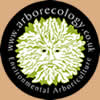Construction Sites | Helping Trees Survive Development | Tree Friendly Excavation | Tree Roots & Development Case Study Air Excavators:
Another cautionary note when using these tools around tree roots is that the compressed air produced by most standard road compressors will contain a small proportion of what are known as ‘crack oils’. This release of oil occurs as part of the compressors lubrication process and the compressed air produced contains on average 5-10 parts per million. This is not considered to be an issue for normal operational needs, because these compressor units are designed to power tools that utilise the compressed air flow to operate an implement such as a ‘jack hammer’. However, when the compressed air is channelled through a hand held lance to enable to excavation of soil around tree roots or pipelines, the ‘crack oils’ it contains would be released out in a fine mist. It is therefore important to install filters in the air line between the compressor unit and the hand held lance. Using two specially designed filter units it is possible to reduce the oil content of the air stream down to a more acceptable 0.05 parts per million, and this is essential when the excavation work is concentrated around living tree roots. Root Investigations: Using the high pressure air stream to break up and blow away the soil from around the base of trees it is possible to look in more detail at the roots which might be affected by the fungi, while also being able to assess the effectiveness of the reactive growth being produced by the tree. By undertaking such a revealing investigation it becomes possible to make more informed management decisions without employing invasive decay detection equipment. Using similar exploration techniques it is also possible to expose utilities such as gas, electricity or telephone lines that may be entwined with the roots of the tree. This could be essential investigative work before undertaking stump removal operations either with a stump grinder or mechanical excavator. A little investment is preparatory work like this can save a lot of extra costs and inconvenience if utilities were to be damaged, not to mention the potential for more catastrophic incidence that could be life threatening. Working on Development Sites: Using similar techniques it is also possible to explore the rooting area of trees prior to the installation of hard surfaces or building foundations. Where planning conditions, or the arboricultural method statement, specifies the use of specialist foundation techniques such as; pile and above ground beam, pad and beam, or canter leaver designs, it is important to find where the tree roots are so the most sensitive installation can be achieved. However, it is essential that all work to expose tree roots be undertaken by qualified arborists with knowledge of tree physiology and ecology, although, the tools themselves are easy to operate and could be used by groundwork contractors during other excavation works. Once exposed the tree roots will need to be treated with care and if left exposed for any length of time they should be covered with wet Hessian or sprayed with a hydro-jell to reduce desiccation as a result of water loss, while mulch can also be used to cover exposed roots during excavation work. Remediating soil compaction: With the controlled use of compressed air, radial trenching out from the trees trunk can improve root growth. This is made easy when the compacted crust can be blown away and replaced with improved soil with a high organic material content. In addition, vertical mulching with the compressed air lance can break through the soil horizons to improve drainage and encourage the development of a more structured rooting environment around the tree. The results of such work dramatically improved soil biodiversity and can have a significant impact on the longevity of the trees. Andrew Cowan, ArborEcology Click here to download this resource. Read more about how the AirKnife works an idea of where it can be used: construction sites, pipeline trenching, tree health investigations, remedial mulching and our tree root research. |
 |
“To interpret observations made of natural things it is essential, |  |
| Website by Digital Detail | Site requirements: Adobe Acrobat, Internet Explorer, Mozilla Firefox |